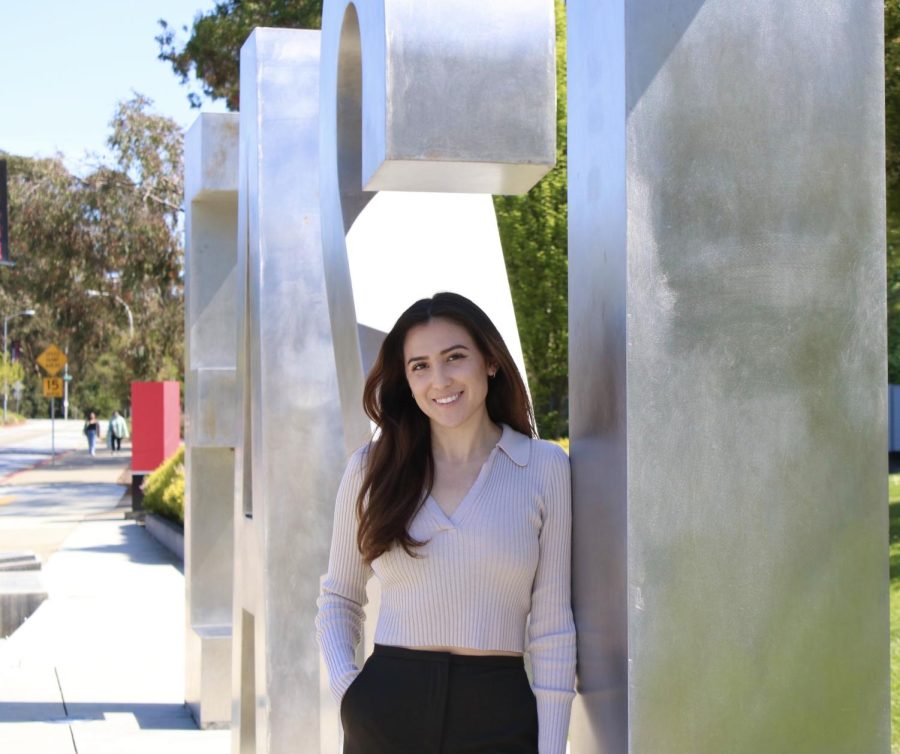A simple signature is all it took to finalize a nearly six-month process that has cut half the number of student representatives in the Academic Senate.
President Leroy Morishita recently signed off on a faculty referendum, passed by a two-thirds majority of CSU East Bay faculty, to cut the number of seats filled by students in the Academic Senate from seven to three.
The reduction of seats is a shift in voting power for students on the Academic Senate floor from roughly 12 percent to roughly 5 percent; set to go into effect at the beginning of the 2013-2014 academic year.
The actual language changed by the referendum, the arguments used to support it, and the manner in which it was passed, gives the students of CSUEB reason to be concerned. Frankly, it gives them reason to go so far as to distrust the messages they hear from faculty about solidarity between faculty and students.
The language changed in Article V, Section 2, J, which explicitly assigned seven seats to students prior to the referendum, now provides students representation equal to “the same number of members as the smallest College (not including the University Library).”
Currently the College of Business and Economics has the smallest number of representatives in the Academic Senate with three, thus explaining the number of student representatives post-referendum for the 2013-2014 academic year.
However, taken together with the language in the constitution and bylaws that dictates how many faculty representatives each college receives, there exists the very real possibility that student representation in the Academic Senate will be decreased even further in the years to come.
Article VII, Section 2 states, “The allocation of 25 College representatives to the several Colleges shall be proportional to the number of regular members in the College Faculties, provided no College shall be unrepresented.”
This guarantees at least one seat to a faculty representative for each college and the allocation must be revisited in the winter quarter of each year. Since student representation must now be equivalent to this number the possibility exists that students would only receive two or even one seat in the Academic Senate in future years.
As such students could potentially only hold power equivalent to roughly 2 percent of the vote in the Academic Senate, a far cry from the 12 percent held prior to this decision.
Which begs the question, why did faculty decide to implement this change and why did President Morishita sign off on it?
The proposal itself, labeled “FUFM 1” on the Academic Senate’s website under the “News and Elections” subsection outlines some of the reasons; additionally, an editorial by Mitchell Watnik, author of the proposal and chair of the Academic Senate, published in October 2012 by The Pioneer, outlines additional reasons.
As presented by Watnik in his editorial, students holding “12 percent of the vote, particularly on resolutions or RTP [retention, tenure and promotion] issues, is too much.” Additionally both the proposal and editorial point out how much higher this representation was at CSUEB in comparison to other schools in the CSU system.
But using this argument comes down to mainly a matter of perspective on whether that increased student representation was a positive or a negative.
In the past CSUEB faculty were ahead of the curve and could lay claim to including students far more than any other CSU campus, with the exception of San Jose State University.
The decision to reverse course on this issue not only puts current faculty at odds with students, it also puts them at odds with those past members of the faculty who saw fit to allow students a 12 percent vote in the Academic Senate.
Additionally, the Academic Senate already provides protections from students interfering in certain matters.
Article XII, Section 1 already gave students two seats on “each Standing Committee except the Faculty Affairs Committee and the Committee on Budget and Resource Allocation.”
If faculty held concerns about students holding too much sway on dictating the positions on certain matters, adjustments could have been made to similarly protect other committees from having student seats or keep students from being able to vote on certain measures, including those coming from certain committees or on specific issues, such as retention, tenure and promotion policies.
Indeed a lack of student participation on Academic Senate committees was expressed among the reasons for the change in both Watnik’s editorial and an article on the issue published in October 2012.
As Watnik pointed out in his editorial, “ASI has not sent a single student to vote on any Senate committee in at least 8 years.”
Yet no language in the constitution and bylaws concerning student positions on committees, which is separate from those who serve in the Academic Senate, was changed. Even Watnik pointed this out in his editorial stating, “The proposal does not change that allocation.”
While ASI has now begun a much more aggressive effort to fill those seats, perhaps in response to this referendum and it now being one of the few remaining ways in which students can be represented in the Academic Senate, there is a false link between that issue and why the decision was made to remove student seats from the Academic Senate.
Myriad other options, including but not limited to removing student seats on each committee, changing quorum rules to ensure committees can meet for official business without these seats filled, or changing the process of how those seats are appointed by removing the responsibility from ASI and making those positions filled through elections, could have been used to address the problem. In fact the Watnik editorial contained fair and reasonable suggestions as to how the problem could be addressed and legitimate criticism of how ASI has handled the responsibility.
But, instead of using this glaring issue as something both faculty and students alike could hold ASI responsible for, it was used to partly justify the removal of Academic Senate student seats; seats that never held any bearing on the matter to begin with.
Instead faculty held a referendum vote, away from the Academic Senate and the student voices contained therein, on the matter and passed the two thirds majority threshold.
Even some faculty, including Dr. Nicholas Baham III in an open letter to his fellow faculty published by The Pioneer in October 2012, decried the effort as it “creates an artificial division between students and faculty who have, up to this point, stood shoulder to shoulder in protest of budget cuts, fee increases, and fair faculty and staff contracts.”
Yet the voices of Baham and faculty who agreed with him were ultimately drowned out by a two-thirds majority of faculty who passed the referendum and President Morishita, who signed it.
In the wake of such a clear decision from the faculty in standing against student representation we as students are left with many questions.
Key among them, should we really believe faculty when they say they have our best interests at heart, or do they really mean they have our best interests at heart only when it benefits them?
It is a fair and reasonable question for students to ask and ask it we should.
















